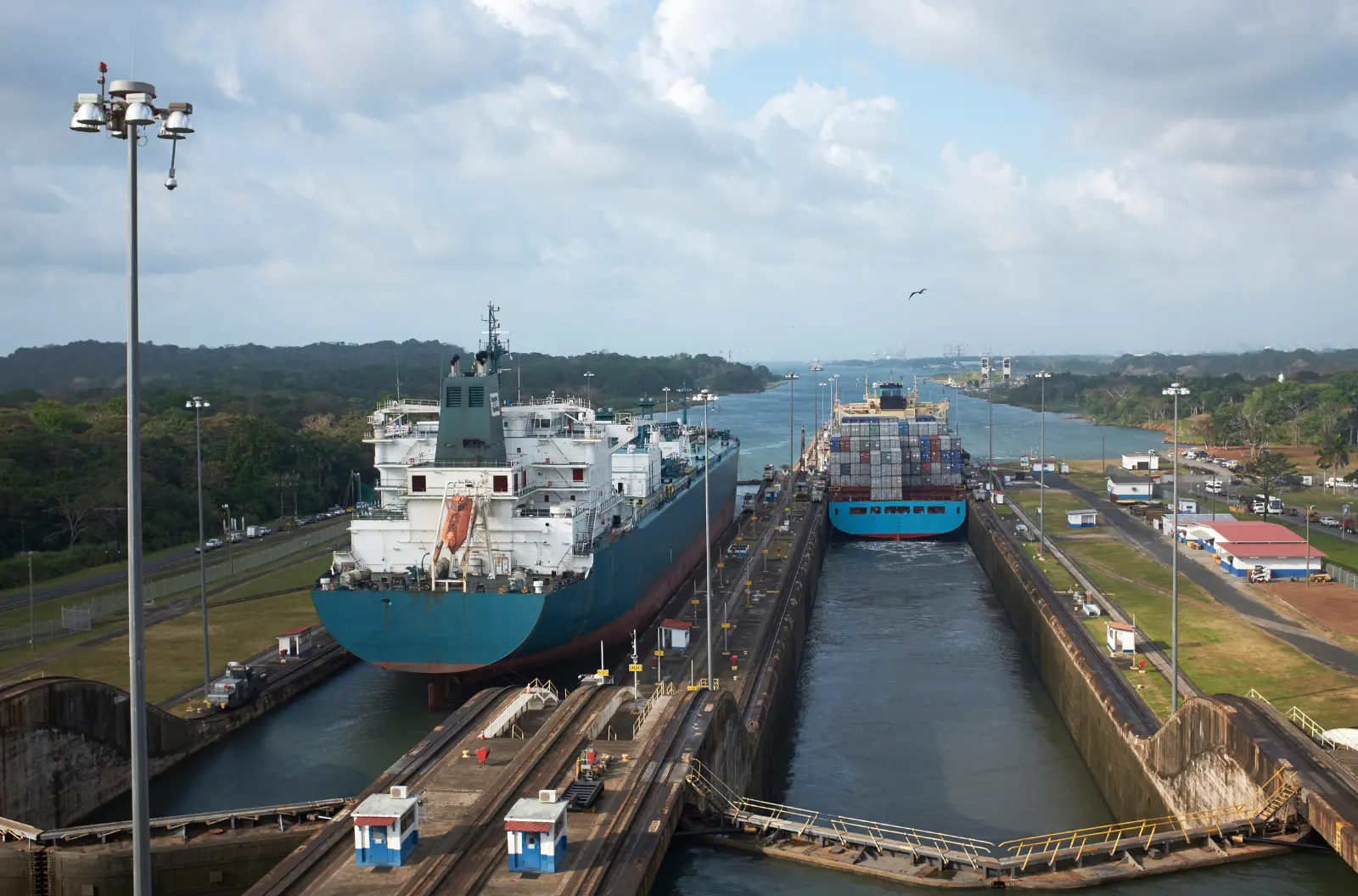The Panama Canal, a cornerstone of global trade, faces increasing challenges due to climate change, particularly the risk of water shortages caused by prolonged droughts. In response, the Panama Canal Authority has proposed the Rio Indio project, an ambitious plan designed to secure a sustainable water supply for the canal’s operations. This initiative is not just a crucial step towards ensuring the canal’s operational continuity but also a significant move in addressing broader environmental and economic concerns.
Project Overview
The Rio Indio project involves the construction of infrastructure to divert water from the Rio Indio, a river in Panama, to the canal. This water would be stored in reservoirs and used to maintain the canal’s water levels during periods of drought. The project is seen as a long-term solution to the water scarcity issues that have increasingly threatened the canal’s ability to accommodate the large volumes of ships that pass through it annually.
Advantages of the Rio Indio Project
Sustainable Water Supply: The primary advantage of the Rio Indio project is its potential to provide a reliable and sustainable water source for the Panama Canal. By tapping into the Rio Indio, the canal can mitigate the impacts of droughts, ensuring that water levels remain sufficient to support the passage of ships, which is crucial for the global supply chain.
Operational Continuity: The Panama Canal is a vital maritime route, facilitating the movement of goods between the Atlantic and Pacific Oceans. Ensuring that the canal remains operational, even during severe droughts, is essential for global trade. The Rio Indio project would help maintain the canal’s functionality, preventing disruptions that could have far-reaching economic impacts.
Economic Stability: The Panama Canal is a significant source of revenue for Panama, contributing billions of dollars to the country’s economy. By securing the canal’s operations, the Rio Indio project would help safeguard this revenue stream, supporting Panama’s economic stability. Additionally, by ensuring the canal’s reliability, the project could attract more shipping traffic, further boosting the economy.
Proactive Climate Adaptation: Climate change is expected to increase the frequency and severity of droughts in the region. The Rio Indio project represents a proactive approach to adapting to these changes, ensuring that the canal can continue to function in a changing climate. This forward-thinking strategy could serve as a model for other critical infrastructure projects worldwide.
Disadvantages of the Rio Indio Project
Environmental Impact: One of the most significant concerns associated with the Rio Indio project is its potential environmental impact. Diverting water from the Rio Indio could disrupt local ecosystems, affecting wildlife and plant life that depend on the river. Additionally, the construction of reservoirs and other infrastructure could lead to habitat loss and other environmental degradation.
High Costs: The Rio Indio project is expected to require a substantial financial investment. The costs of construction, maintenance, and operation could place a significant burden on the Panama Canal Authority and the Panamanian government. There is also the risk that cost overruns or unforeseen expenses could further escalate the project’s price tag.
Social Displacement: The construction of the Rio Indio project could require the relocation of communities living near the river or the proposed reservoirs. This could lead to social unrest and displacement, creating challenges for the government in managing these impacts and compensating affected populations.
Long-Term Viability: While the Rio Indio project is designed to address current and near-future water shortages, there are concerns about its long-term viability. As climate change continues to alter weather patterns, the availability of water in the Rio Indio itself could be compromised. If the river’s flow diminishes over time, the project may not provide the sustainable solution it promises.
Environmental Impact
The environmental impact of the Rio Indio project is one of the most debated aspects of the initiative. Diverting water from the Rio Indio to the Panama Canal could have several ecological consequences. The river and its surrounding environment are home to a variety of species, many of which could be adversely affected by changes in water flow and habitat disruption.
The construction of reservoirs and other infrastructure could lead to deforestation, soil erosion, and the loss of biodiversity in the region. Furthermore, the alteration of the river’s natural flow could impact downstream ecosystems, potentially leading to reduced water quality and availability for other uses.
Mitigating these environmental impacts will require careful planning and the implementation of strategies to minimize harm to the ecosystem. Environmental assessments and consultations with local communities and conservation groups will be essential to ensure that the project is developed in a way that balances the need for water security with the protection of natural resources.
Impact on Global Trade
The Panama Canal is a critical artery of global trade, with thousands of vessels passing through it each year. The canal significantly reduces travel time between the Atlantic and Pacific Oceans, making it a key route for international shipping. However, the canal’s operations are heavily dependent on a consistent and abundant supply of freshwater, which is used to fill the locks that raise and lower ships as they transit.
In recent years, droughts have increasingly threatened the canal’s operations, leading to restrictions on the size and number of ships that can pass through. This has had a ripple effect on global trade, causing delays and increasing shipping costs.
The Rio Indio project is designed to address these water shortages, ensuring that the canal can continue to operate at full capacity. By providing a reliable water source, the project would help prevent disruptions to global supply chains, supporting the timely and efficient movement of goods around the world.
Moreover, by securing the canal’s operations, the Rio Indio project could help maintain the canal’s competitive advantage over other shipping routes, such as the Suez Canal or the Cape of Good Hope. This is particularly important as the shipping industry continues to evolve, with larger vessels and new trade routes emerging.
Conclusion
The Rio Indio project represents a significant and proactive effort to secure the future of the Panama Canal in the face of climate change and water scarcity. By providing a sustainable water source, the project aims to ensure the canal’s operational continuity, economic stability, and global trade efficiency.
However, the project also presents challenges, including potential environmental impacts, high costs, and social displacement. Addressing these challenges will require careful planning, robust environmental protections, and ongoing engagement with stakeholders.
In the broader context of global infrastructure, the Rio Indio project serves as a model for how critical infrastructure can adapt to the realities of climate change. As the world continues to grapple with the impacts of a changing climate, initiatives like the Rio Indio project will be essential in ensuring the resilience and sustainability of key economic and trade routes.
For more detailed information about the project and its implications, visit the full article on FreightWaves.
Contact Us
Questions or looking for a quote?





